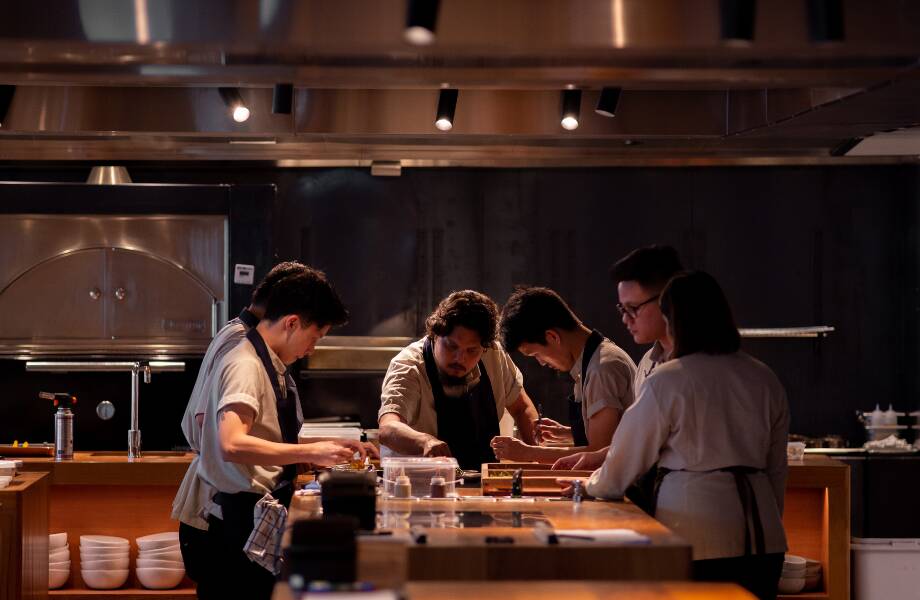Chinese Takeout is a bite-sized, biweekly RADII feature that examines Chinese food from the inside out, by disentangling the (hi)stories behind a single dish or restaurant. Write to us if you have a suggestion or submission.
Like many Chinese cities, the Sichuanese capital of Chengdu is caught up in a swell of development, which threatens to wash away the gritty, historic alleys that have characterized it for decades.
It is also a city, however, where food always comes first — and nothing tastes better than nostalgia. People across the city, regardless of age or class, still flock to unassuming eateries that remind them of decades past.
Brother’s Beef Restaurant, a tiny one-room restaurant whose bustle spills out onto the sidewalk at every meal, is one such reminder of a Chengdu that may soon fade into ancient history.
The Place
Brother’s Beef Restaurant (兄弟牛肉馆) sits defiantly at a fork in the road up against a towering new apartment complex, seemingly unshaken by the changes that swirl around it.
The unpretentious eatery is located on Baojia Alley, northwest of People’s Park, on the edge of the neighborhood once known as Shaocheng (少城).

Brother’s Beef on Baojia Alley
This neighborhood, which encompasses the park as well as Chengdu’s famous Wide and Narrow Alleys, was the “inner city” during the Qing dynasty. And though it is situated in central Chengdu, the neighborhood retains a strong community feel, with small tree-lined streets and a smattering of old(-ish) buildings.
“The city is different now,” explains Zhang Zhongyuan, the younger of the two brothers who run Brother’s Beef Restaurant. “Young people want different things.” He and his brother both grew up on this street and have witnessed the changes in surrounding communities. But despite the rapid development, which is always preceded by the removal of old neighborhoods, Zhongyuan isn’t worried about their restaurant. They own the apartment it operates out of, and aren’t the type to budge easily.
The History
The Zhang brothers, who now run the restaurant, worked at a State-owned factory in this very neighborhood throughout the 1970s. But as the nationalized economy changed, their jobs became casualties of a series of widespread layoffs known as xiagang (下岗).
The community and local government entities supported the brothers to open a business, and the brothers opted for a restaurant. “We weren’t trained chefs. My brother learned to cook from our parents,” says Zhongyuan. “He wanted to start a restaurant, so I joined him in the venture.”

The Zhang brothers
One of the first things you’ll notice when you go to Brother’s Beef Restaurant is that many of the staff are over 60 years old, which is somewhat of an anachronism in the city.
This is because the brothers hired family and personal friends to assure they had work in the changing economy.
The brothers run the restaurant the same way they always have: committed to cooking they way they learned when they were young, with a seemingly unconscious effort to preserve the feel and atmosphere of the city they grew up in.
The Food
There is only one thing on the menu here: niurou (牛肉), or beef. But don’t be mistaken into thinking there’s a limited selection. A restaurant that specializes in one ingredient is a perfect showcase for the diversity of flavors and cooking techniques that exist in Sichuan food.
If you do get a chance to order, you do so by cooking style. But more often than not, it is the younger Zhang’s presence that greets you before you even get a seat. His booming voice rumbles out of the kitchen and into the street as he rushes from table to table, taking orders by memory.
“One braised, one cold-mixed in chili oil, one steamed, one fried, and a soup!” Zhang barks as he runs back into the kitchen. Guests sometimes throw in a seasonal vegetable, or order tofu — but all of it is, as you may have guessed, cooked with beef.
Parts of the menu change by season, but there are a few staples that shouldn’t be missed. Liangban niurou (凉拌牛肉) is a must: slices of beef and offal (often stomach) served cold in homemade chili oil and dusted with chopped peanuts.

Liangban niurou (凉拌牛肉)
Fenzheng niurou (粉蒸牛肉) consists of small pieces of beef covered in ground rice and spices and steamed in a bamboo steamer, then smothered in minced garlic and cilantro with a shot of the ubiquitous chili oil. Kidneys are meticulously cut so they open like flowers when fried, while tendons and chewy cuts are stewed with daikon.
The kitchen makes a stock from the bones, and serve it as a soup with slices of tripe and green onions. Other Sichuan classics are rendered in uniquely bovine ways, such as kung pao beef. The menu is a masterclass in using different parts of the animal, and an opportunity to show off the great diversity of Sichuanese cooking techniques — lest you think all Chinese food is just stir-fry.
With the city in flux all around them, it could be said that the Zhang brothers owe much of their success to a stubborn resistance to change. The place hasn’t changed, the flavors haven’t changed, and the owners have not changed in almost 40 years — and that’s what has kept the place busy.
The Zhang brothers are in no rush to keep up either. “Everyone is trying to make such sensational food now,” says Zhongyuan. “Everyone wants to make it more spicy, or make it more this or that. We just do it the way we know, the way we always have.”
All images by Jordan Porter.
















